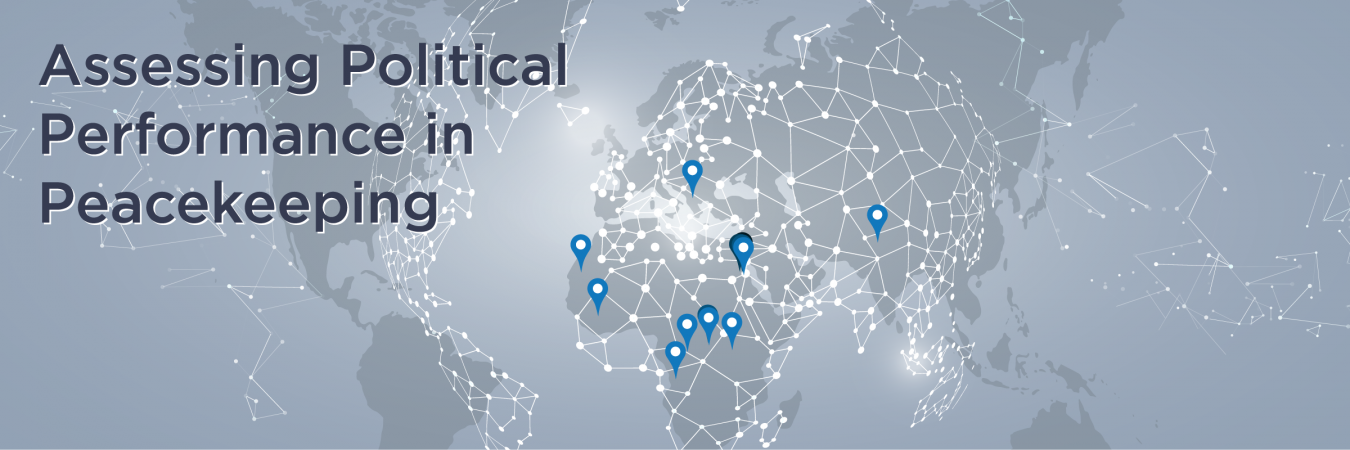Assessing Political Performance in Peacekeeping


14 December 2020
By Olabisi Shoaga, Political Affairs Officer, Division of Policy, Evaluation and Training, Department of Peace Operations
Over the past few years, there has been a rise in the use of data, particularly quantitative data, to showcase progress and performance during reporting and briefings on peacekeeping. A good deal of the work done in this regard has been in operational support, military operations, conduct and discipline, gender, rule of law and human rights related areas of work.
Descriptive metrics such as numbers of patrols conducted, numbers of investigations conducted, percentage of women peacekeepers, numbers of demobilized ex-combatants reintegrated, etc., have been employed as yardsticks for measuring performance. These metrics are considered to form the basis of more rigorous, objective and structured analysis than qualitative data alone. Not all aspects of UN peacekeeping work, however, can measure progress and performance through quantitative metrics.
Notably, progress on political solutions, which fundamentally are at the center of UN peacekeeping are notoriously difficult to capture in figures. It is, of course, possible to measure aspects such as the numbers of meetings held and of participants; categories of stakeholder groups represented; numbers of working days; demographic breakdown of participants; and the numbers of peace agreements signed by parties. These metrics, however, often fail to portray fully the political significance of these processes or capture the quality, the extent of engagement or even the good or bad faith of the parties.
Exploiting data in political performance
Indeed, many underlying dynamics are difficult, if not impossible to capture in figures obtained through statistical methods. If, for instance, a mission succeeded in organizing only one meeting among all parties in conflict, numerically this is unimpressive when all is taken into account. What this measurement fails to consider is the significance of the event. Was it the first of its kind? Could the meeting have a positive or negative multiplier effect? Should the meeting be considered a failure if the political situation deteriorates afterwards?
To fill these data gaps, qualitative indicators have been used instead or alongside quantitative data. Qualitative indicators have the added advantage of being adaptable to specific circumstances and, in addition to tracking progress, could assess impact and effectiveness.
For all their purported objectivity, statistics do not necessarily make for more objective, rigorous and better analysis. The quality of the statistics, the methodology employed, data gathering and analytical procedures, types of issues, contextual factors such as the economy, legal frameworks, cultural norms, available resources and stakeholder perceptions might influence results in an unexpected manner. Even though useful, statistics might be misused, especially when they are misunderstood, incorrectly interpreted and are used to uphold an opinion rather than to elucidate and clarify issues.
Towards better evidence-informed analysis
Notwithstanding the challenges raised above, the request for the use of data in analysis and reporting on political aspects of UN peacekeeping related work is not likely to go away anytime soon. Obtaining worthwhile and useable results from data-based analysis is contingent on a number of factors, chief of which is closing the divide between subject matter experts and statistics experts. The two parties need to bring together their expertise and resources to design indicators, which can reliably and systematically measure performance and impact on the political aspects of peacekeeping. This kind of collaboration is in line with the Secretary-General’s Data Strategy, which underscores the importance of establishing an enabling culture that values cross-sharing of knowledge, and to staff empowerment for strengthened analytical capabilities.
Crucial to achieving the right composition of personnel are continuous training and exchange of experience on different analytical approaches. This is particularly crucial given the evolving nature of conflicts and their changing contexts. In addition, such blending would further contribute towards fostering better understanding of differing points of views as well as of the strengths and limitations of using different approaches. Perhaps more importantly is the need to come to terms with the fact that statistics, be they quantitative, qualitative or mixed, do not tell the whole story, especially when human beings are involved.
There is need to accompany data by other evidence drawn from several sources, including empirical case studies, analogical reasoning, expert opinions and verified documentation to provide a better understanding of the phenomena under study.
Note: The views expressed herein are those of the author and do not necessarily reflect the views of the United Nations.

